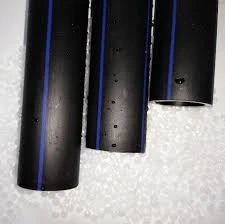Nov . 10, 2024 23:25 Back to list
Types and Applications of Water Pipe Fittings for Efficient Plumbing Solutions
Understanding Water Pipe Fittings A Comprehensive Guide
Water pipe fittings are vital components in plumbing systems, serving various functions that facilitate the efficient transport of water. These fittings connect different sections of pipes, helping to direct the flow, change its direction, reduce its diameter, or provide a termination point. In this article, we will explore the types, materials, applications, and installation considerations of water pipe fittings.
Types of Water Pipe Fittings
Water pipe fittings come in various shapes and sizes, tailored to meet the specific needs of a plumbing system. Some of the most common types include
1. Elbows Used to change the direction of the piping, elbows are typically available in 90-degree and 45-degree angles. They allow for efficient routing around obstacles and can be found in numerous applications, from residential plumbing to industrial systems.
2. Tees These fittings have three openings, allowing water to flow in three different directions. Tees are essential for branching pipelines, enabling the connection of additional pipes or fixtures.
3. Couplings Designed to connect two sections of pipe, couplings come in two main varieties regular and slip. Regular couplings connect two pipes of the same diameter, while slip couplings can slide over another pipe and are particularly useful for repairs.
4. Reducers These fittings allow for the transition between pipes of different diameters. They can be either concentric or eccentric, depending on the application, and help in maintaining an efficient flow while minimizing turbulence.
5. Caps and Plugs Caps are used to close off the end of a pipe, while plugs serve a similar purpose but fit inside the pipe. These fittings are essential for stopping flows in unused or temporarily disconnected sections.
6. Valves While not strictly fittings, valves are crucial for controlling the flow of water in a system. They can be gate valves, ball valves, or check valves, providing essential control over water distribution.
Materials Used in Water Pipe Fittings
The material chosen for water pipe fittings significantly affects their performance and longevity
. Common materials include- PVC (Polyvinyl Chloride) Lightweight, durable, and resistant to corrosion, PVC is a popular choice for residential and commercial plumbing. It is typically used in low-pressure applications.
water pipe fittings

- CPVC (Chlorinated Polyvinyl Chloride) Similar to PVC but with a higher temperature rating, CPVC is ideal for hot water applications.
- Copper Known for its longevity and reliability, copper fittings are often used in commercial plumbing and heating systems. They have excellent resistance to corrosion but can be more expensive than plastic alternatives.
- Galvanized Steel Previously a standard for water supply lines, galvanized steel fittings are coated with zinc to resist corrosion. However, they are being phased out in favor of more modern materials.
- Brass Often used for fittings connected to faucets or valves, brass provides a good balance of strength and corrosion resistance.
Applications
Water pipe fittings are used in a variety of settings, including residential, commercial, and industrial plumbing systems. They are essential for delivering potable water, draining wastewater, and facilitating irrigation in agricultural settings. Additionally, in industrial applications, specific fittings may be required to handle chemicals or high-pressure conditions.
Installation Considerations
Proper installation of water pipe fittings is crucial to ensure the long-term functionality and safety of the plumbing system. Key considerations include
- Threading Ensure the threads are compatible between the fitting and the pipe. Use Teflon tape or pipe compound for sealing threaded connections to prevent leaks.
- Jointing Methods Depending on the material, fittings may be glued (PVC and CPVC), soldered (copper), or threaded (steel and brass). Each method requires specific tools and techniques for effective assembly.
- Local Codes Always adhere to local plumbing codes and regulations to ensure safety and compliance. This may involve using specific materials or following certain installation practices.
In conclusion, water pipe fittings are indispensable in creating efficient plumbing systems. Understanding their types, materials, and proper installation techniques helps ensure a reliable water supply for various applications. Whether you are a homeowner or a professional plumber, familiarity with water pipe fittings is essential for successful plumbing projects.
-
Durable Glossy PVC Rigid Sheet | Premium High-Shine Panels
NewsAug.26,2025
-
Durable PP Rigid Sheet: Lightweight, Chemical Resistant Solutions
NewsAug.21,2025
-
PVC Grey Sheet for Extraction: Chemical Resistant & Durable
NewsAug.19,2025
-
Durable PVC Pipe Fittings for Plumbing & Irrigation Needs
NewsAug.18,2025
-
HDPE Steel Belt Reinforced Spiral Corrugated Pipe | High Strength
NewsAug.17,2025
-
HDPE Pipe Fittings: Durable, Leak-Proof Solutions
NewsAug.16,2025

